the-documents.org
the-documents.org is an online platform, collecting, describing, presenting and generating documents of all sorts. It documents documents. The sound of Mount Vesuvius on a January evening, instructions on how to use jumper cables, the packaging of Tabasco pepper sauce… : the-documents.org presents photographs, scans, screenshots, audio- and movie-files and offers a short textual description or digression. There are myriad ways of navigating through the collection.
the-documents.org gathers documents and provides them with a short textual description, explanation, or digression, written by multiple authors. Regularly, new files will be added, and old files will be altered. In Paper Knowledge, Lisa Gitelman paraphrases ‘documentalist’ Suzanne Briet, stating that ‘an antelope running wild would not be a document, but an antelope taken into a zoo would be one, presumably because it would then be framed – or reframed – as an example, specimen, or instance’. The files gathered on this website are all documents – if they weren’t before publication, they now are. That is what this website, irreversibly, does. It is a zoo turning an antelope into an ‘antelope’.
the-documents.org was designed and developed by Atelier Haegeman Temmerman and was made possible with the support of the Flemish Government and KASK, the School of Arts of HOGENT and Howest.
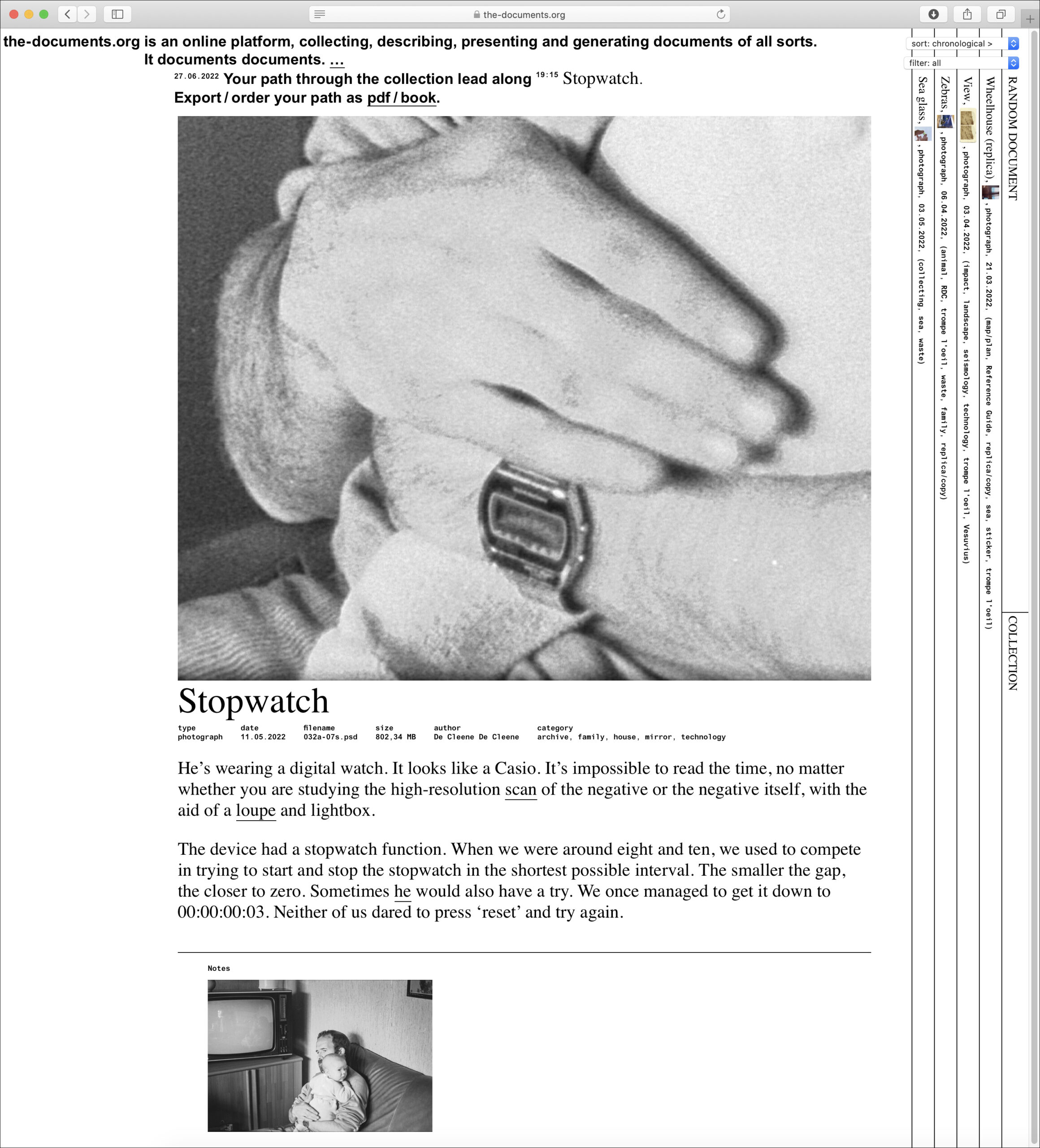
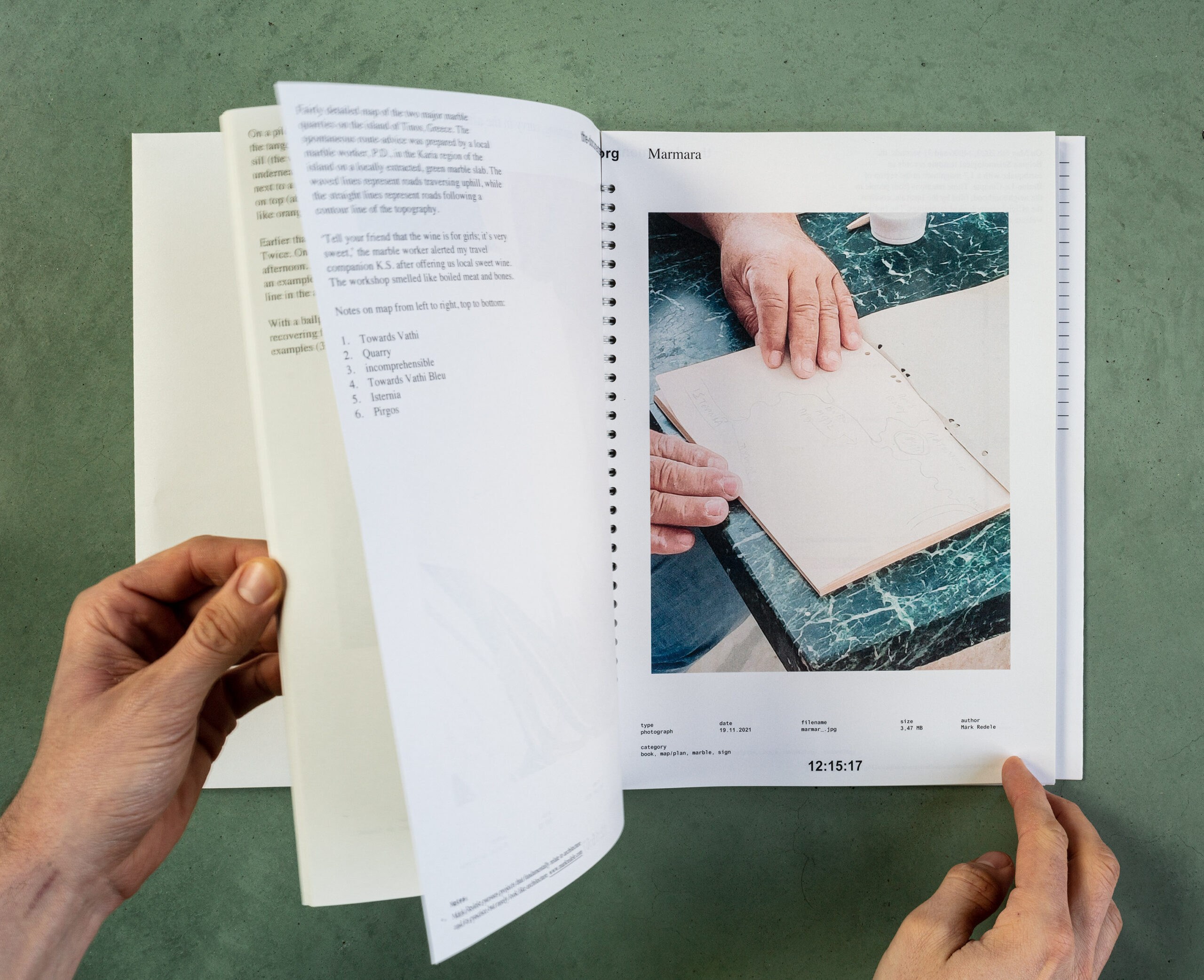
As you make your way through the online collection, the-documents.org tracks the documents you have viewed. It documents your path through the website. As such the time spent on the-documents.org turns into a new document: your personal, printed, book-version of the-documents.org.

To order you personal copy: [1] visit www.the-documents.org, [2] browse the collection of documents: your path through the collection grows and is documented, [3] click 'order as pdf/book' at the top when you feel like your path is ready, [4] fill in your details, pay (price according to thickness of book/length of path), and get your personal copy delivered by mail.
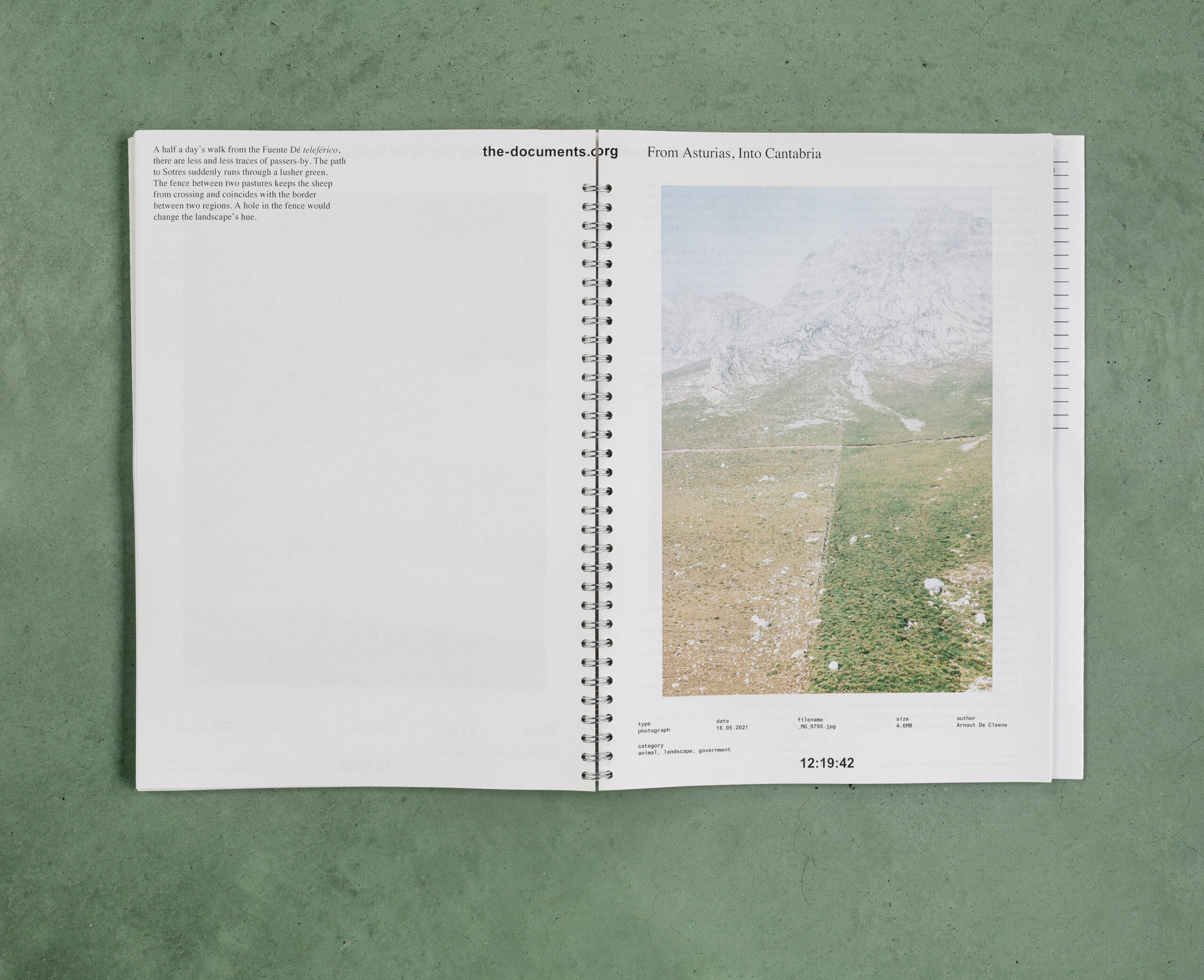
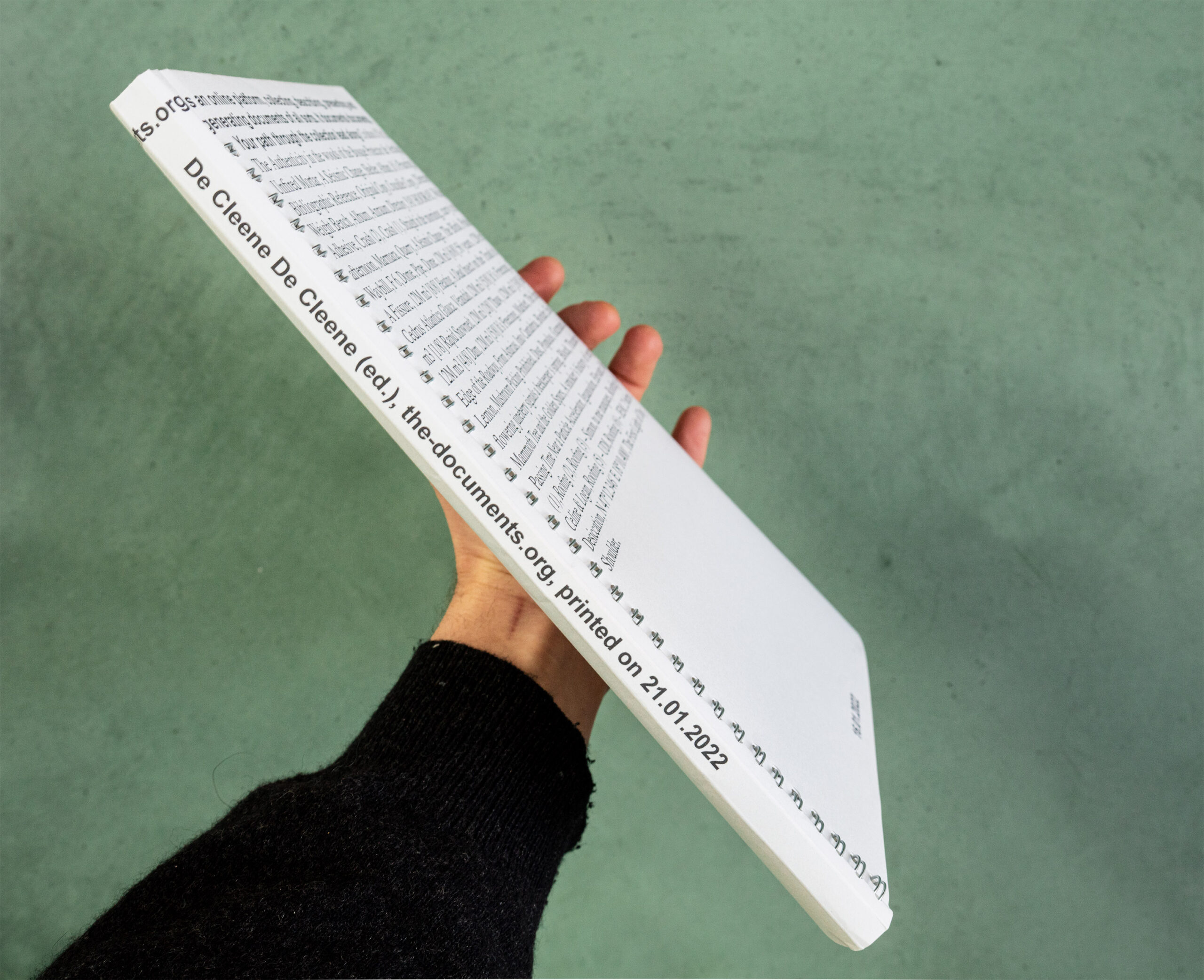
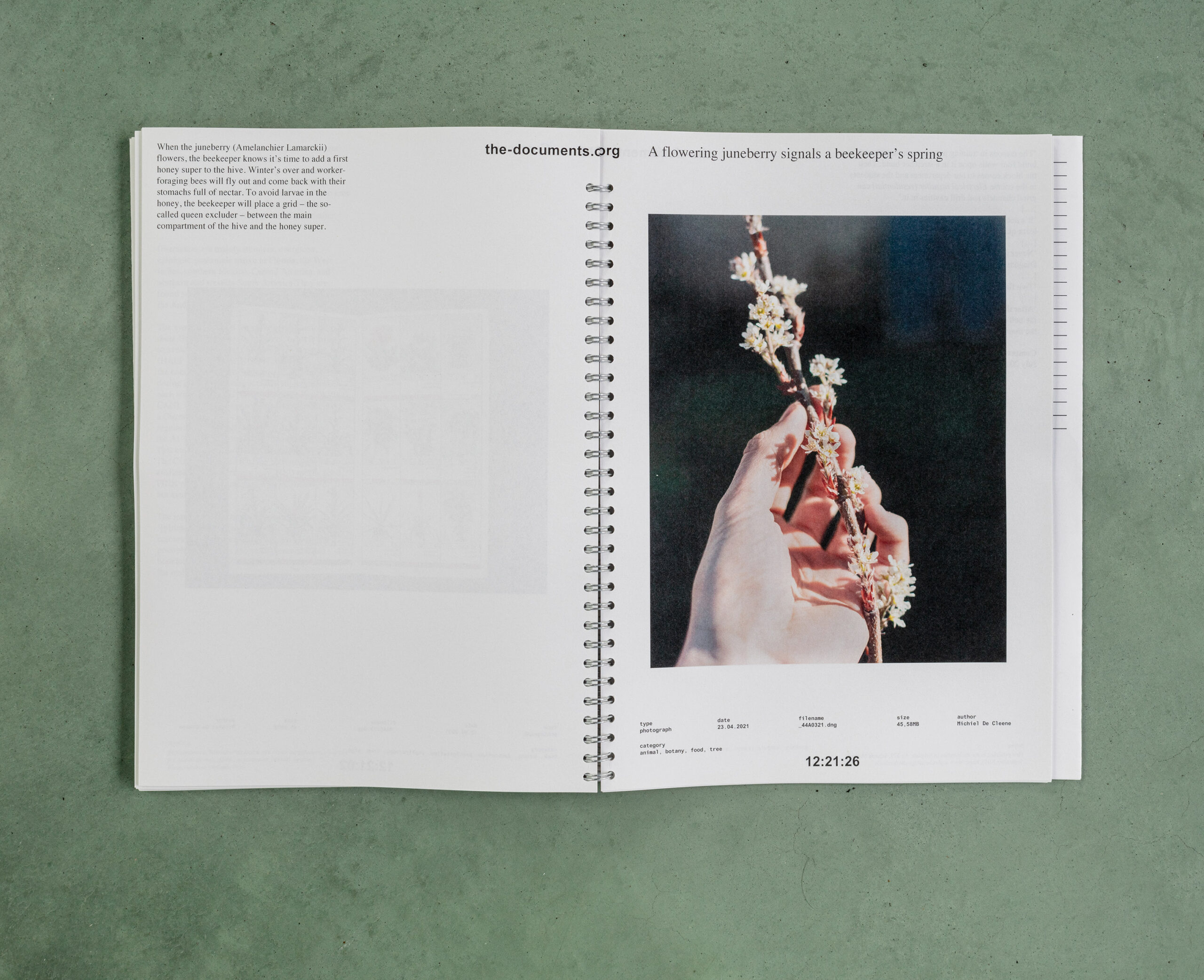
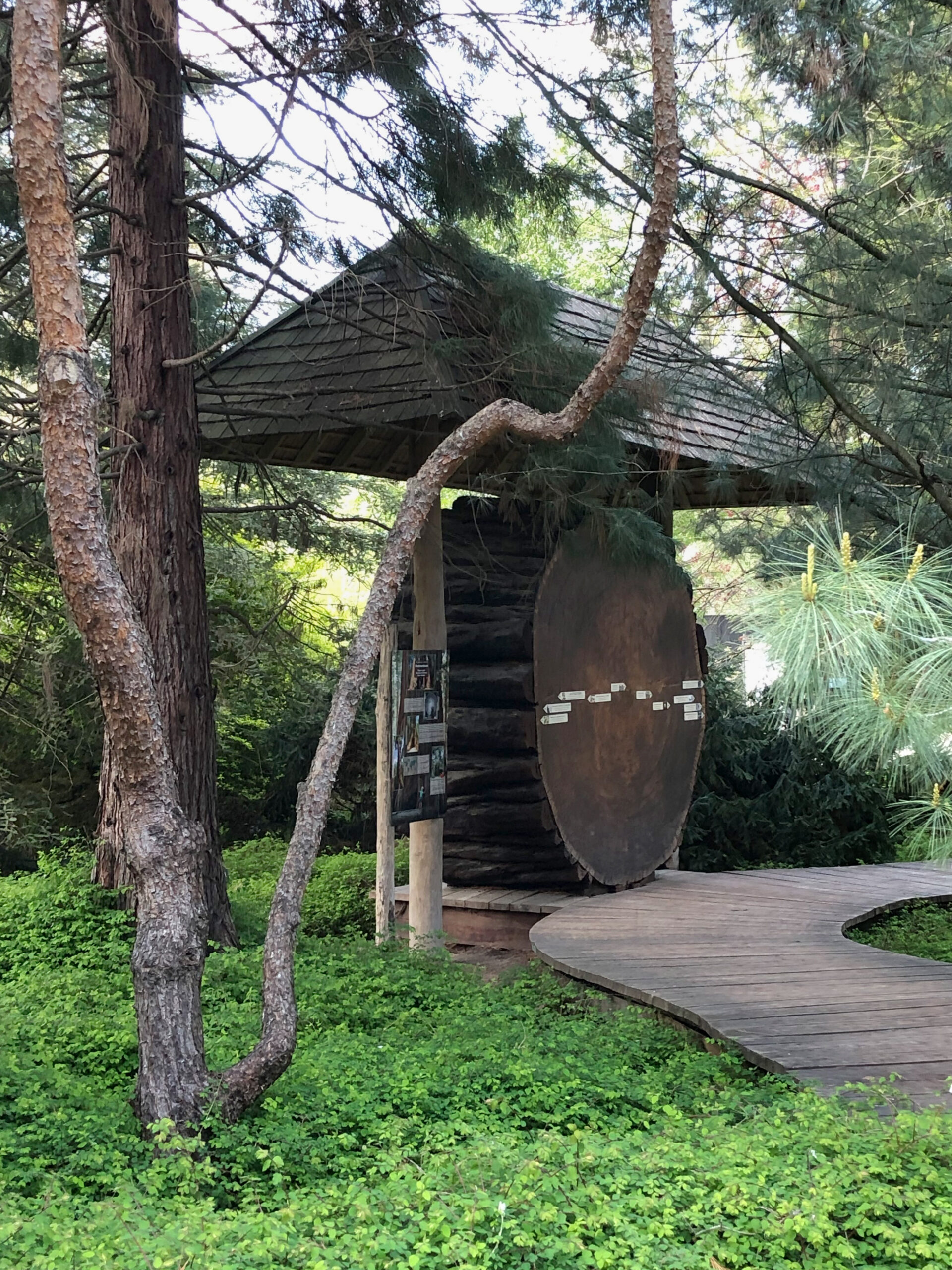
Mammoth Tree and the Golden Spurs --- Between the rhinos and the kangaroos in the Antwerp Zoo a wooden footpath curves through a grove of Sequoiadendron Giganteum trees. In the middle of this Californian forest, visitors find the giant slice of a felled tree of the same species. It was brought to the zoo in 1962 and was approximately 650 years old at the time. Eleven labels point out significant moments in history on the tree’s growth rings. They range from zoo- and zoology-related moments (for instance: ‘1901: The Okapi is described as a species’, or ‘1843: Foundation of the RZSA and opening of the Zoo’, or ‘1859: Darwin publishes The Origin of Species’, etc.), to cultural and historical milestones (‘1555: Plantijn starts publishing books in Antwerp’, or ‘1640: Rubens (baroque painter) dies’, or ‘1492: Columbus in America’). Another label points to the last growth ring and reads: ‘1962: this tree is felled and this tree disc is installed at the Zoo.’ The label pointing to the centre of the tree implies a simultaneity between the tree’s first growth year and the Battle of the Golden Spurs in 1302.
